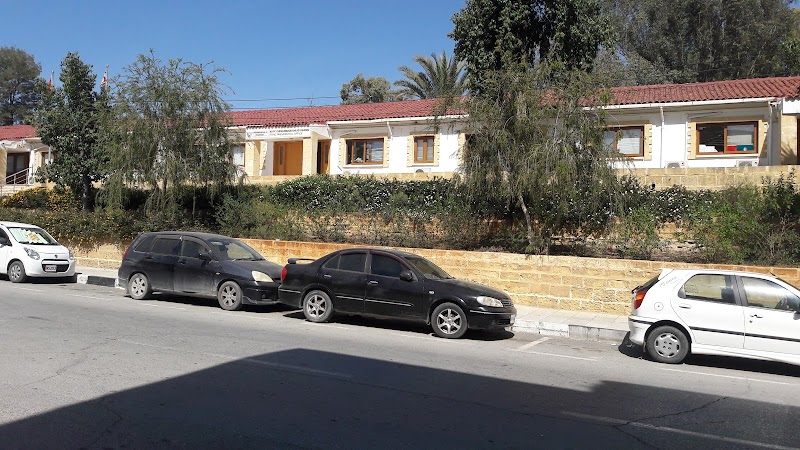Archbishop Makarios III, born Mihail Khristodoulou Mouskos, served as the first President of Cyprus from 1960 to 1977. He played a pivotal role in the island’s struggle for independence from British rule and its subsequent transition to a republic.
Background and History:
- Born on August 13, 1913, in the village of Panagia, Paphos District, Cyprus.
- Studied theology at the University of Athens and was ordained as a priest in 1946.
- Elected as Bishop of Kition in 1948 and later became Archbishop of Cyprus in 1950, taking the name Makarios III.
- Led the Cypriot resistance movement against British colonial rule during the 1950s, calling for self-determination and independence.
Ethnicity:
- Makarios III was a Cypriot of Greek descent.
- He identified strongly with the Greek Orthodox Church and advocated for the preservation of Cypriot cultural and religious heritage.
Achievements and Legacy:
- Independence and Republic: Makarios III played a key role in negotiating the independence of Cyprus from British rule, culminating in the Zurich and London Agreements of 1959.
- First President: He was elected as the first President of the Republic of Cyprus in 1960, serving two consecutive terms until his death in 1977.
- Non-Aligned Movement: Makarios III pursued a policy of non-alignment during the Cold War, maintaining close relations with both the East and West.
- Intercommunal Dialogue: He engaged in dialogue with the Turkish Cypriot community, seeking to foster reconciliation and a peaceful resolution to the island’s division.
- Economic Development: Makarios III initiated economic reforms and development projects, including infrastructure improvements and the promotion of tourism.
Popular Recognition:
- Makarios III remains a revered figure in Cyprus, known for his leadership, charisma, and dedication to the Cypriot cause.
- His mausoleum in Nicosia, Cyprus, attracts numerous visitors paying homage to his legacy.
- His name and image have been featured on Cypriot currency, stamps, and other commemorative items.
Archbishop Makarios III’s presidency was marked by both successes and challenges. He is remembered as a visionary leader who guided Cyprus through its transition to independence and laid the foundation for the island’s future development.
Emblem of Cyprus
To enrich your insights into presidential figures worldwide, also explore some prominent first presidents from other countries, such as Cuba, Croatia and Côte d’Ivoire. Delving into the leadership journeys of these figures can offer valuable perspectives on their historical significance and pivotal roles in shaping global politics.
The official residence and symbol of the Cyprus President
10 Iconic Presidents Who Shaped Cyprus’s History

The Republic of Cyprus, a Mediterranean island country, has had many influential and popular presidents throughout its history. Here are 10 of the most prominent presidents of Cyprus:
- 1. Makarios III (1960-1977): Archbishop Makarios III was the first president of Cyprus after gaining independence from British rule. He played a vital role in the formation of the country and its initial years.
- 2. Glafcos Clerides (1993-2003): Glafcos Clerides was known for his negotiation skills and efforts to find a peaceful solution to the division of Cyprus. He also worked towards the country’s accession to the European Union.
- 3. Tassos Papadopoulos (2003-2008): Tassos Papadopoulos led Cyprus during a crucial time, particularly in relation to the UN-led peace talks and the country’s EU membership.
- 4. Nicos Anastasiades (2013-present): Nicos Anastasiades is the current president of Cyprus. He has dedicated his presidency to promoting economic reforms and increasing international cooperation.
- 5. Spyros Kyprianou (1977-1988): Spyros Kyprianou played a significant role in advocating for the rights of Greek Cypriots during his presidency. He also served as the president of the UN General Assembly.
- 6. Dimitris Christofias (2008-2013): Dimitris Christofias was the first Communist president of Cyprus. He focused on social welfare and economic policies during his time in office.
- 7. Georgios Vassiliou (1988-1993): Georgios Vassiliou contributed to the efforts for a peaceful solution to the Cyprus problem. He also played a role in the country’s EU accession negotiations.
- 8. Ioannis Kyprianou (1977): Ioannis Kyprianou served as the acting president for a few months after the death of Archbishop Makarios III. He laid the foundation for future presidents.
- 9. Tassos Papadopoulos (2003-2008): Tassos Papadopoulos’s presidency was marked by his firm stance on the Cyprus problem and his commitment to the reunification of the island.
- 10. Nikos Sampson (1974): Although his presidency lasted only eight days, Nikos Sampson played a significant role in the political events leading up to the Turkish invasion of Cyprus in 1974.
These presidents have left a lasting impact on Cyprus, each contributing to the country in various ways. From advocating for human rights to negotiating peace agreements, their leadership has shaped the history and development of Cyprus.

